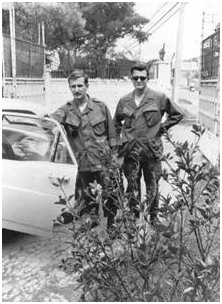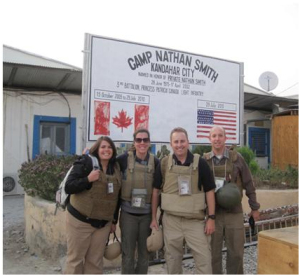Fighting Fraud, Waste, and Abuse on the War Front
-
[caption id="attachment_795" align="alignright" width="222"]
 GAO auditors in Saigon during the Vietnam War[/caption]
Vietnam War. In 1966, GAO opened an office in Saigon from which it conducted audit work in Vietnam—sometimes under combat conditions. For example, in 1969 six GAO auditors narrowly escaped injury when enemy rockets hit the barracks in which they were sleeping. GAO reported on topics including contract management and the effects of Agent Orange.
GAO auditors in Saigon during the Vietnam War[/caption]
Vietnam War. In 1966, GAO opened an office in Saigon from which it conducted audit work in Vietnam—sometimes under combat conditions. For example, in 1969 six GAO auditors narrowly escaped injury when enemy rockets hit the barracks in which they were sleeping. GAO reported on topics including contract management and the effects of Agent Orange.
- The Contra War. In the late 1980s, following the disclosure of the U.S. sale of arms to Iran and provision of aid to the Contras in Nicaragua, GAO assessed U.S. efforts to aid the Contras and reviewed the transfer of weapons from the Department of Defense to the Central Intelligence Agency.
- Operations Desert Storm/Desert Shield. In the early 1990s, GAO issued reports assessing, for example, the effectiveness of the U.S. Operation Desert Storm air campaign, the adequacy of medical supplies, and military asset safeguarding and accountability.
- Operation Iraqi Freedom. GAO began sending analysts to Iraq in 2004, maintaining a continuous presence at the U.S. Embassy in Baghdad from 2008 through 2011. GAO analysts assessed, among other things, the efforts to secure, stabilize, and rebuild Iraq; the use of private security contractors; and the drawdown of U.S. forces and equipment.
-
[caption id="attachment_797" align="alignright" width="300"]
 GAO analysts in Afghanistan during Operation Enduring Freedom[/caption]
Operation Enduring Freedom. GAO sent analysts to conduct oversight in Afghanistan as early as 2002. GAO currently maintains a continuous presence of analysts at the U.S. Embassy in Kabul. GAO analysts have investigated a wide range of key oversight issues, including the role of U.S. forces in developing the Afghan National Army, DOD’s Afghanistan assistance programs, and the management of contractors. According to one GAO analyst who recently returned to GAO Headquarters after 6 months in Afghanistan, GAO staff working out of the embassy have traveled throughout Afghanistan to support audit work to areas including Bagram, Helmand province, Herat, Kandahar, and Mazar-e-Sharif.
GAO analysts in Afghanistan during Operation Enduring Freedom[/caption]
Operation Enduring Freedom. GAO sent analysts to conduct oversight in Afghanistan as early as 2002. GAO currently maintains a continuous presence of analysts at the U.S. Embassy in Kabul. GAO analysts have investigated a wide range of key oversight issues, including the role of U.S. forces in developing the Afghan National Army, DOD’s Afghanistan assistance programs, and the management of contractors. According to one GAO analyst who recently returned to GAO Headquarters after 6 months in Afghanistan, GAO staff working out of the embassy have traveled throughout Afghanistan to support audit work to areas including Bagram, Helmand province, Herat, Kandahar, and Mazar-e-Sharif.
- Questions on the content of this post? Contact Cathleen Berrick, at berrickc@gao.gov, Paul Francis, at francisp@gao.gov, or Loren Yager, at yagerl@gao.gov.
- Comments on GAO’s WatchBlog? Contact blog@gao.gov.

GAO's mission is to provide Congress with fact-based, nonpartisan information that can help improve federal government performance and ensure accountability for the benefit of the American people. GAO launched its WatchBlog in January, 2014, as part of its continuing effort to reach its audiences—Congress and the American people—where they are currently looking for information.
The blog format allows GAO to provide a little more context about its work than it can offer on its other social media platforms. Posts will tie GAO work to current events and the news; show how GAO’s work is affecting agencies or legislation; highlight reports, testimonies, and issue areas where GAO does work; and provide information about GAO itself, among other things.
Please send any feedback on GAO's WatchBlog to blog@gao.gov.
